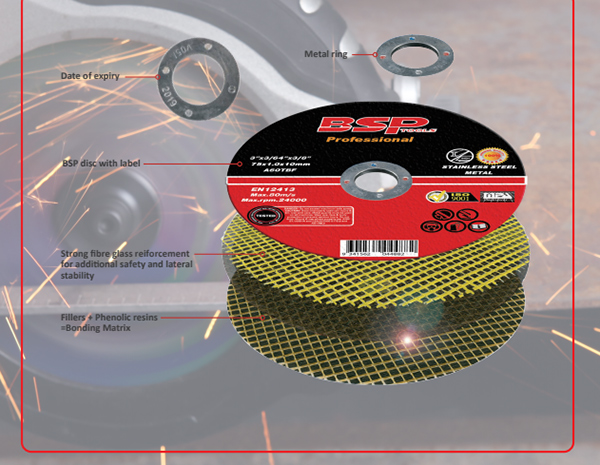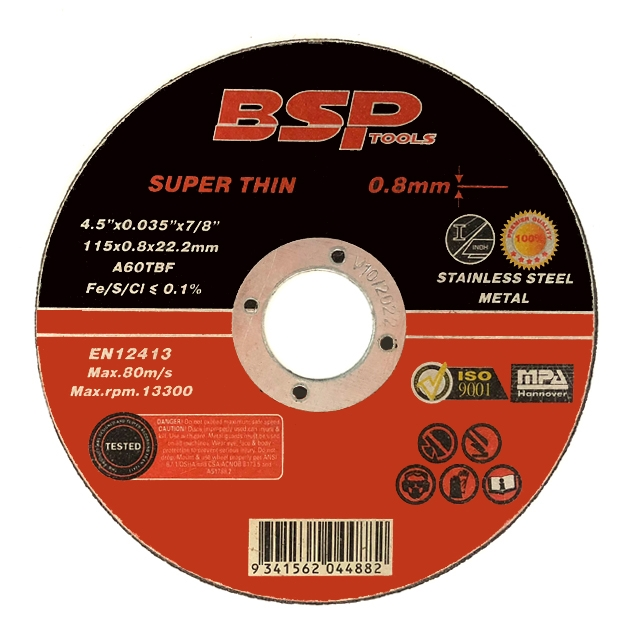What is an Abrasive Cutting Disc
An abrasive cutting disc is a disposable tool made from an abrasive material. These discs are typically found on grinders, grinding machines, and metal cutoff saws.
The shapes, sizes and coarseness of abrasive cutting discs vary, as do their materials. Each material provides the abrasive cutting disc with a certain level of cutting and grinding ability. Coarseness is very similar in this regard, with grits ranging anywhere from extremely fine to very coarse.
Abrasive cutting discs are typically made from multiple layers of a compacted abrasive compound, making them somewhat similar to fibre sanding discs. The difference is that fibre sanding discs is often very thin and is normally used only for finishing wood.
An abrasive cutting disc, on the other hand, is typically far thicker and is made of tougher materials for the purpose of cutting. On some occasions, an abrasive cutting disc will consist of an aluminum or steel core coated with an abrasive material. Such construction often allows for higher strength and durability, but can also have an effect on prices.
The construction of the abrasive cutting disc is not the only variable that plays into pricing. In fact, abrasive cutting discs vary in accordance with a number of variables.
One of the most important variables is the material being used, as the materials that make up the abrasive cutting disc can vary greatly. Other variables, such as grain coarseness, grain spacing, and disc grade, also play a big role in the quality and price of an abrasive cutting disc.
Typically, there are four different abrasive materials that can be used on abrasive cutting discs. These materials are aluminum oxide, silicon carbine, diamond, and cubic boron nitride. Aluminum oxide is typically the most inexpensive and commonly found abrasive material, and discs composed of this substance will not cut nearly as well as diamond cutting discs 115.
Grain coarseness ranges anywhere from around 10 to 600. Coarseness corresponds with the cutting capabilities of the disc. As a result, different grinding jobs vary in required coarseness. If the abrasive is more coarse, it will cut better. Thus, it will not leave a smooth finish; therefore, much like fibre sanding discs, a lower coarseness is required for jobs that need precision.
Disc grade ranges anywhere from A to Z, or soft to hard, respectively. There are numerous variables that determine the grade of an abrasive cutting disc. Variables include limitations in revolutions per minute (RPM), grinding depth, and ranges in feed rates. Coolant requirements are also an important factor, as overheating during the grinding process can result in damage to both the tool and the material.
Grain spacing is very much like coarseness, ranging anywhere from 1 to 16. Instead of measuring coarseness, this measures the density ratio of the abrasive material itself to air space. Much like coarseness, however, a lower density will be better for cutting applications, while a higher density will allow for more precise work.
Abrasive cutting discs also come in a wide variety of shapes, each one capable of performing a specific job. The most common is known as a straight disc and is often found on hand-held grinders and grinding machines. While these can certainly cut metal, they are most often reserved for rough finishing work. There are, however, abrasive cutting discs reserved solely for cutting; these are known as cutoff wheel abrasives and are found on metal cutoff saws.
For more information, please contact us- BINIC, coated abrasives and abrasives manufacturer.


